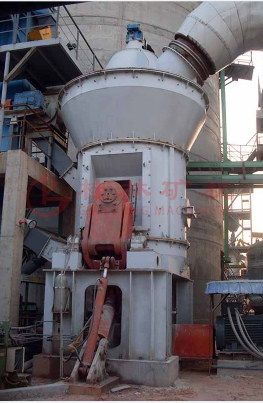Chromium slag is a large amount of highly toxic solid waste discharged from chromium salt production plants and ferrochromium alloys in the production process. In these solid wastes, in addition to calcium, magnesium, iron, silicon, aluminum and other elements, it also contains a certain amount of reactive Incomplete Cr2O3, 1~3 water-soluble sodium chromate and acid-soluble calcium chromate.

1. Technical principles of chromium slag treatment
①The treatment of chromium slag should start from reforming the process route, adopting clean production processes as much as possible, using non-toxic, harmless or low-toxic, low-hazard raw materials and energy, or converting the remaining substances into non-toxic or usable by-products: using New technologies and new equipment that do not produce or less produce main chrome slag, maximize the utilization of resources and energy, and eliminate chrome slag in the production process.
②In the production process of chromium chemical products, the chromium slag that must be discharged should be treated on the spot according to its nature. Eliminate its negative impact on the environment through the recycling or comprehensive utilization of chrome slag. For enterprises with conditions, chrome slag should be treated in a centralized manner in accordance with the national management regulations and technical specifications for hazardous wastes to prevent secondary pollution.
③ The chromium slag that cannot or cannot be comprehensively utilized for the time being must be properly stored and detoxified, stabilized, solidified or utilized when conditions are ripe in the future.
2. Chromium slag treatment method:
The pollution of solid hazardous wastes in the production of chromium salts mainly involves two aspects: one is the old slag accumulated for many years, and the other is the constantly generated new slag. The overall pollution control plan is to reduce old slag while not accumulating new slag. The governance is divided into three levels: the first is harmless control, the second is the comprehensive utilization of resources, and the third is the use of green processes with zero pollution. Although chromium slag is highly toxic to the environment, animals, plants and humans, because it contains calcium, magnesium, iron, silicon, aluminum and other elements, as well as a certain amount of incompletely reacted CrO3, it can be reused as a resource. Turn harm into profit and waste into treasure. Its main application ways are: iron making with chrome slag, refractory material with chrome slag, glass brick and other building materials with chrome slag, cement with chrome slag, glass-ceramic with chrome slag, pigment with chrome slag, Use slag to make calcium magnesium phosphate fertilizer, use chrome slag to make bricks, use chrome slag to build roads, etc.
Harmless control treatment refers to the use of physical, chemical and other methods for chromium slag to carry out safe treatment and disposal of harmless or low harm to the environment, so as to achieve the purpose of detoxification or stabilization. The existing treatment technologies at home and abroad are mainly: curing method, reduction method, complex method, stack storage method, microwave method, electrochemical method and so on.
Chromium slag treatment process: coal and chrome slag are respectively sent to the crusher for crushing and measurement, mixed according to the predetermined ratio (100:25 or 100:30), and then ground into fine powder with a particle size of 160 days by the pulverizer After screening, the coarse powder is returned to the mill for further grinding, and the fine powder is sent to the silo, and is sent to the cyclone by the primary air through the impeller feeder, and is burned under the strong rotational disturbance of the secondary air. At the same time, the hexavalent chromium It is reduced to trivalent chromium in the reduction zone. The slag flows down the wall of the cyclone, and the unburned slag enters the secondary combustion chamber to burn the ember; it continues to be burned and reduced, and the slag flows into the bottom of the furnace and is discharged from the slag outlet. The molten slag is quenched by water and solidified into a glass body, which settles in a sedimentation tank and is taken out with a slag hopper to be used as a building material or cement admixture. Water quenching water is recycled without discharge. The fly ash is collected by the secondary dust collector (mechanical method and electrostatic method), and sent into the furnace by the secondary air through the pipeline for remelting and further reduction and detoxification. Flue gas emission standard.
Can chrome slag vertical roller mill grind chrome slag?
The content of particles with a particle size larger than 2mm in the chromium slag is 33.8%, and the particles with a particle size larger than 0.074mm account for 91.1%. From the particle gradation, the chromium slag is a kind of gravel. Therefore, the prerequisite for the harmless treatment and comprehensive utilization of chromium slag is the need for pulverization. So, what equipment is used to grind chrome slag? Chromium slag vertical roller mill is a grinding equipment for grinding chrome slag. Chromium slag has high hardness and high abrasiveness. Therefore, the requirements for the wear parts of the crusher are very high, and the general mill does not have the ability to crush the chromium slag in terms of quality. Chromium slag vertical roller mill can process some materials with high hardness and corrosiveness, and is the choice for reprocessing and utilization of chromium slag. It plays a role in stimulating the activity of chromium slag in the harmless treatment and comprehensive utilization of chromium slag, and has been widely used in the production of chromium slag in the cement industry.












